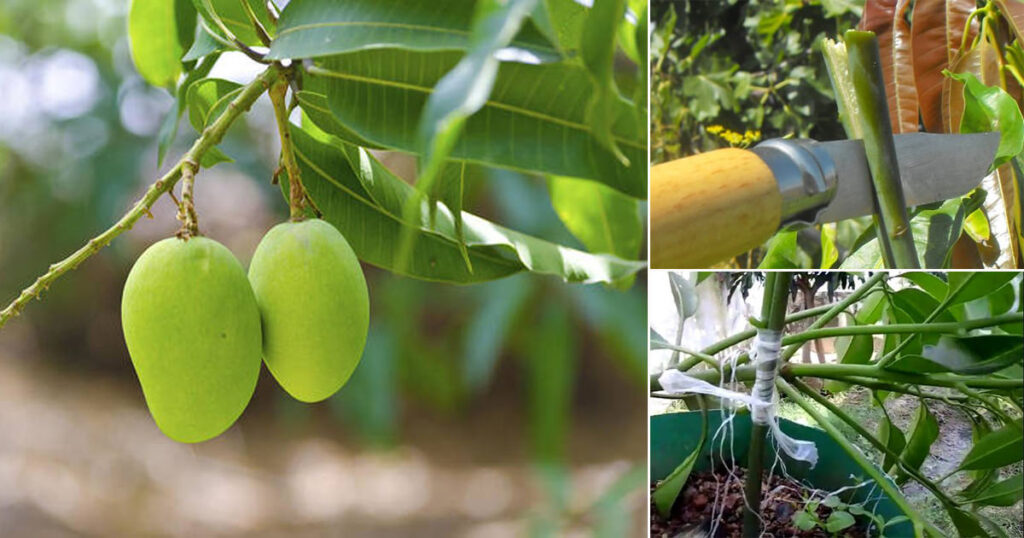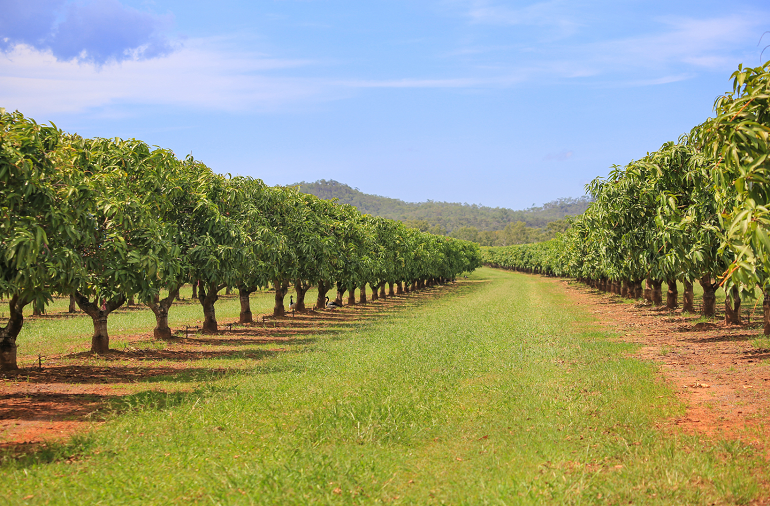Content
- Popular Mango Varieties Cultivated in Kenya
- Mango Propagation
- How to Plant a Mango Tree
- Mango Tree Care
- Factors to consider for Mango Orchard Establishment
- Conclusion
Mango orchard is an essential contributor to the global fruit industry, providing the beloved and widely consumed tropical fruit, mango. With increasing concerns about food safety and the growing demand for high-quality produce, it is crucial to establish mango orchards that prioritize food safety practices. Mango orchards not only yield an abundant harvest but also create a picturesque haven where nature’s beauty unfolds.
A mango orchard refers to an agricultural plantation or area dedicated to growing mango trees for the commercial production of mango fruits.
Mango orchards can vary in size, ranging from small-scale to large commercial operations. The mango growing areas in Kenya include Mombasa, kwale, Kilifi, Tana River, Lamu, Muranga, Embu, Meru, Machakos, Kitui, and Makueni.
1. Popular Mango Varieties Cultivated in Kenya
- Kent: Kent mangos feature a sweet and delicious taste further enhanced by their juicy flesh, which has a limited number of fibers. Due to their texture and flavor, Kent mangoes are ideal for juicing and drying and also find uses in baking. Kent mangoes are dark green, having a dark red blush over a small portion of the fruit. Its availability is in January, February, and December.
- Tommy Atkins: Tommy Atkins has a medium to large size, bright red or orange skin, and greenish-yellow flesh. The flesh is mildly sweet and fibrous, making it suitable for fresh consumption and processing.
- Keitt: Keitt mangoes are highly regarded for their large size and excellent flavour. They have green skin that develops a yellow blush as they ripen. The flesh is juicy, smooth, and fibreless, with a rich, sweet flavour. Keitt mangoes are often enjoyed fresh but are also suitable for juicing and desserts.
- Haden: Haden mangoes have a distinctive flavour and aroma. They are medium-sized with vibrant red or yellow skin. The flesh is juicy, tender, and fibreless, offering a sweet and tangy taste. Haden mangoes are popular for fresh consumption and used in various culinary applications.
- Apple Mango: This variety is highly valued for its unique taste and aroma. It has a small to medium size with orange or yellow skin. The flesh is dense, juicy, and fibreless, with a sweet, tangy flavour reminiscent of tropical fruits. Apple mangoes are often eaten fresh or used in fruit salads and desserts.
- Madame francique: Also known as the desert mango owing to its greatness in desserts. This variety colors varies from green to orange to slightly yellow. It is known for its sweet and spicy taste, which is rare and tangy but exceptionally brilliant.
2. Mango propagation
Propagation: – is the process by which new plants grow from various sources: seeds, cuttings, and other plant parts. Mangoes can be propagated in two ways: sexually, that is, through seeds, and asexually.

Learn different ways of propagating Mangoes
3. How to Plant a Mango Tree
The ideal period to plant a mango tree is during the months of March, April, and May when the climate is moderate. Nevertheless, it’s crucial to ensure that the mango tree is not susceptible to any frost during the planting process.
- Selecting a Planting Site: Mango trees prefer a sunny spot with loose, well-draining soil. Consider the tree’s mature size when selecting a planting site, and note the site’s proximity to other plants and structures. Container growth is an option for the smaller mango tree varieties
- Spacing, Depth, and Support: Spacing depends on the mango variety you’re growing. Check the mature canopy width, along with the height, to make sure you’ll have enough room to grow your tree.
Saplings should be planted in their nursery container at the same depth they were growing. It would be best if you planted seeds about 1/2 inch deep. Saplings might need staking for support as they grow, especially in an area with strong winds.
4. Mango Tree Care
- Light: Mango trees require full sun, meaning at least eight hours of direct sunlight on most days. Their flower and fruit production will suffer if they don’t get enough light. A south-facing window indoors can work, but moving the pot outside as much as possible for full sunlight exposure is best.
- Soil: Mango trees can tolerate a variety of soil types. But a sandy loam that’s light and well-draining is best. The soil pH can range from slightly acidic to slightly alkaline (5.5 to 7.5).
- Water: Mango trees have some drought tolerance, though drought can negatively impact fruit production. It’s best to water whenever the top couple inches of soil dry out, but do not let the tree sit in soggy soil.
- Temperature and Humidity: To cultivate mangoes successfully in Kenya, it is crucial to have a dry period during flowering, which typically occurs between August and October, and adequate heat during fruit ripening. The ideal temperature range for optimal growth and productivity is thought to be between 20 and 26 degrees Celsius. However, it is important to note that temperatures exceeding 40 degrees Celsius can result in sunburned fruit and stunted tree growth, particularly in hot and dry regions.
- Fertilizer: These trees don’t need a lot of fertilizer, and if you already have rich soil, you likely won’t have to provide supplemental feeding. Following label instructions, a slow-release balanced fertilizer can be applied in poor soil conditions.
- Pollination: Bees, ants, flies, and other pollinators pollinate mango trees.
5. Factors to Consider for Mango Orchard Establishment

Establishing a mango orchard requires careful planning and consideration of various factors. Here are some essential factors to consider:
- Climate and Ideal Location: Mango trees thrive in tropical and subtropical climates, requiring well-drained soil and ample sunlight. Select a sunny spot with a gentle slope to prevent water stagnation and promote healthy root development. Consider the proximity to a water source and protection from strong winds for optimal growth and yield.
- Soil Quality: Mango trees prefer well-drained soils with a pH range of 5.5 to 7.5. Conduct a soil test to assess fertility, texture, and nutrient content. Improve drainage and fertility through soil preparation and amendment if necessary. Avoid saturated or excessively sandy soils.
- Water Availability: Mango trees require regular and adequate water supply, especially during flowering and fruit development. Ensure a reliable water source, such as a well, borehole, or irrigation system, to provide sufficient water. Optimize water usage and minimize wastage through effective water management techniques like drip irrigation or micro-sprinklers.
- Variety Selection: Choose mango varieties suited to the local climate and market demands. Consider factors such as disease resistance, fruit quality, yield potential, and suitability for fresh consumption or processing. Plant a mix of early, mid-season, and late-season varieties to extend the harvest period and diversify your product range.
- Pollination: Mango trees rely on insects like bees, ants, and flies for pollination. Create a conducive pollinator environment by minimizing pesticide use and planting bee-friendly flowering plants nearby. Some mango varieties may require cross-pollination, so plant-compatible varieties in proximity to facilitate pollination.
- Orchard Design and Layout: Plan the orchard layout carefully, considering tree spacing, row orientation, and windbreaks. Optimal spacing between mango trees allows for sunlight penetration, air circulation, and ease of management. Allocate space for orchard infrastructure like access paths, irrigation systems, and storage facilities.
- Optimal spacing between mango trees: Spacing varies from 10 m x 10 m in the dry zones where growth is less, to 12 m x 12 m, in heavy rainfall areas and rich soils where abundant vegetative growth occurs. Spacing allows for adequate sunlight penetration, air circulation, and ease of management. Consider leaving ample space for orchard infrastructure, such as access paths, irrigation systems, and storage facilities.
- Pest and Disease Management: Mango orchards are susceptible to various pests and diseases, such as fruit flies, scales, anthracnose, and powdery mildew. Implement integrated pest management (IPM) practices, including regular monitoring, biological controls, and judicious use of pesticides when necessary. To minimize risks, focus on preventive measures like orchard hygiene, pruning, and removing infected plant parts.
- Pruning and Training: Pruning shapes trees, promotes healthy growth, and improves fruit quality. Learn proper pruning techniques to remove dead, diseased, or crossing branches and maintain an open canopy structure. Early training through formative pruning establishes a strong framework for future growth and facilitates orchard management.
- Harvesting and Post-Harvest Handling: Understand maturity indicators for different mango varieties to determine the ideal harvest time. Develop a timely harvesting, handling, and post-harvest management system to preserve fruit quality. Proper sorting, grading, and storage conditions maintain freshness and extend shelf life.
- Market Research and Marketing Strategies: Conduct market research to understand mango demand in your target market. Identify potential buyers, distributors, and value-added processing opportunities. Develop marketing strategies to promote your mangoes effectively and establish sales channels such as local markets, wholesalers, retailers, or direct consumer sales.
Conclusion
Establishing mango orchards that prioritize food safety practices and consumer awareness is crucial for the successful cultivation of mangoes. Mango orchards yield abundant harvests of delicious tropical fruits and serve as picturesque havens where nature’s beauty unfolds. However, in today’s world, where concerns about food safety and the demand for high-quality produce are increasing, addressing these aspects in mango orchard establishment is essential.
To ensure that the produced fruits are safe for consumption, food safety should be paramount in mango orchards. This involves implementing good agricultural practices, such as proper handling of fertilizers and pesticides, maintaining hygienic conditions, and adhering to relevant regulations and standards. By adopting food safety practices, orchard owners can mitigate the risk of contamination and ensure that their mangoes meet the highest quality and safety standards.
In addition, consumer awareness plays a vital role in mango orchard establishment. Educating consumers about food safety and cultivation practices used in mango orchards helps build trust and confidence in the product. Transparent communication about the orchard’s farming methods, adherence to regulations, and any certifications obtained can enhance consumer perception of the mangoes’ safety and quality. This awareness can be fostered through marketing efforts, labeling, and consumer engagement at local markets or through digital platforms.
When mango orchards prioritize food safety and consumer awareness, it creates a positive cycle. Consumers who are confident in the safety and quality of the mangoes are more likely to support the orchard and its produce. This, in turn, benefits the orchard owners by expanding their customer base and increasing market demand for their mangoes.
By establishing mango orchards with a strong emphasis on food safety and consumer awareness, we can ensure the production of safe, high-quality mangoes that meet the expectations of an increasingly discerning consumer base. This not only safeguards the health and well-being of consumers but also strengthens the reputation and sustainability of mango orchards in the global fruit industry.
Learn more: Mango Growing in Kenya by Jurgen Griesbach (World Agroforestry Centre)
Also learn how to combat Mango Fruit Fly Infestation.
